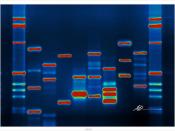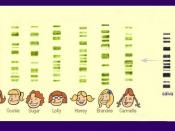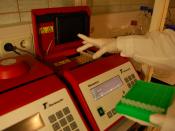PCR is Polymearse Chain Reaction I should have explained it in slightly more detailed
PCR And Its Use
Often times, scientists only have a small amount of DNA to deal with when doing genetic research or studies. In these situations, scientists can do one of several things. One is to just try to work with it anyway, but this is nearly impossible (depending on how much there is). Ther are a couple other processes they can use, or they can use PCR. PCR is one of the more complicated, but reliable ways to do tests on DNA when they only have a small amount to begin with. PCR, or Polymearse Chain Reaction, is the scientific process used by genetic scientists to clone DNA.
'A 'rapid diagnostic' technique used in the clinical microbiology lab to detect pathogens. It relies upon amplification technology utilizingthe heat stable DNA polymerase from a thermophilic organism.'
(from http://www.genes.com/pcr/pcrinfo.html) Dr. K.Mullis recently received the Nobel prize for inventing the technique.
This is how they go about doing this: They first get their small DNA sample. Then they mix all the chemicals (this includes the primer, etc). Then they have to run it through the PCR machine. Here is a (rather detailed) description of the process: 'The cycling protocol consisted of 25-30 cycles of three-temperatures: strand denaturation at 95degC, primer annealing at 55degC, and primer extension at 72deg C, typically 30 seconds, 30 seconds, and 60 seconds for the DNA Thermal Cycler and 4 seconds, 10 seconds, and 60 seconds for the Thermal Cycler 9600, respectively.'
Basically, that means that they set it to certain temperatures, then put it in different cyles for different amounts of time. PCR machines can be compared with washing machines. There are the different temperatures (here for example, there is 72degC,


